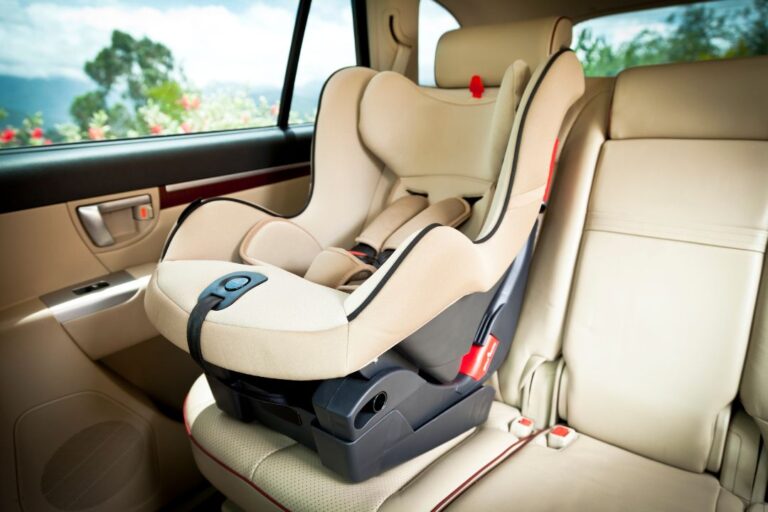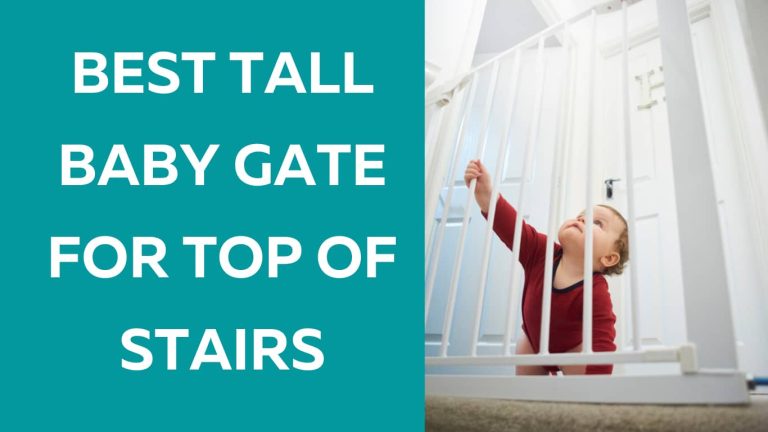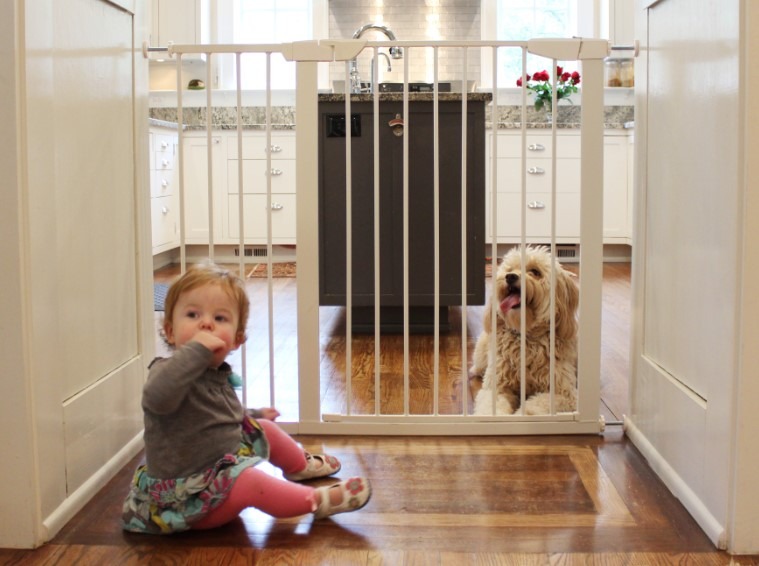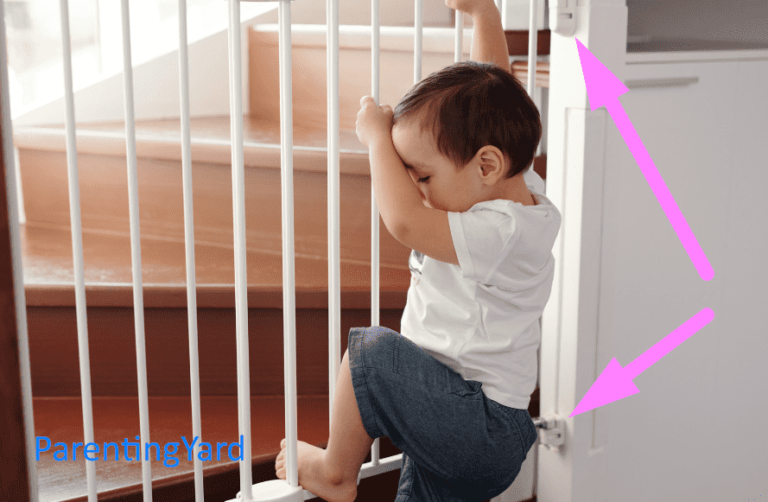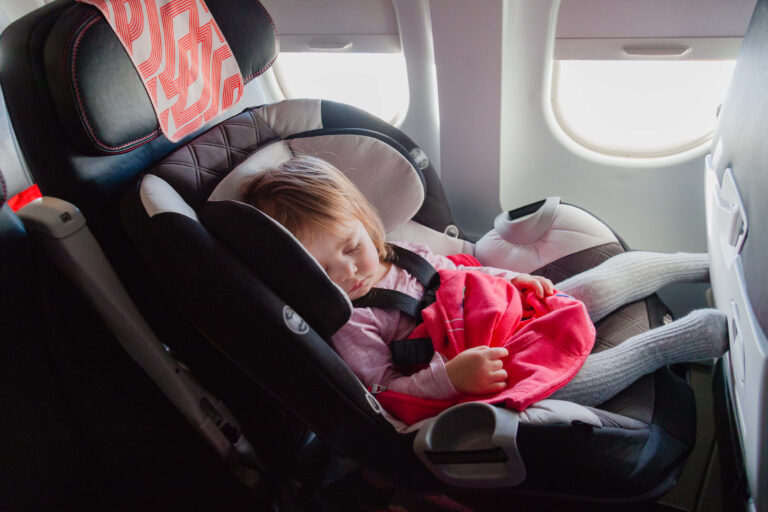When your little baby starts moving here and there, the first thing you need to keep them safe is a baby gate. Using a baby gate, you can prevent your child from going into dangerous parts of your home or falling down the stairs.
But while selecting a baby gate, you may feel confused because several types are available in the market.
The two main baby gate types are hardware-mounted and pressure-mounted gates. And under these two gate types, the other categories are stepped over, swing through and hybrid gate. Selecting the best baby gate is important to ensure your child’s safety.
Therefore keep going through this article to the end. This comprehensive guide will explain the types of baby gates in detail. After learning about the baby gate types, decide which one you should buy.
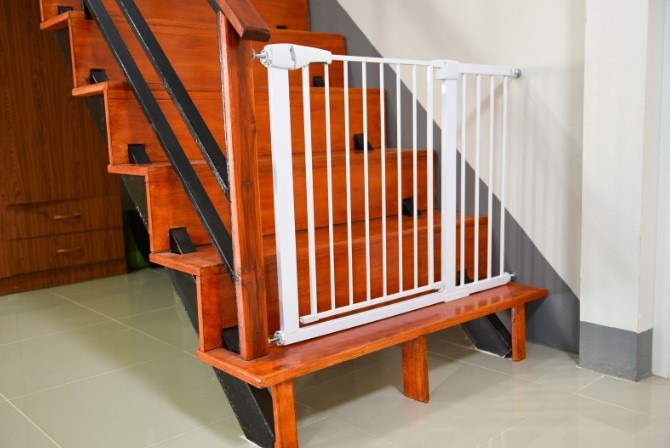
Types of Baby Gates
Two kinds of baby gates are available, and those are:
- Pressure-Mounted Gates: The pressure-mounted gates are like tension rods. In this type of gate, you don’t need to screw them. Moreover, you can take this gate with you when you go outside for a vacation.
The pressure-mounted gates are best for the hallways, doorways and temporary gates. Also, if you don’t want to damage your wall by screwing it, this gate type is the best option.
- Hardware-Mounted Gates: You must screw the hardware-mounted gate’s sides into your walls. Mounting the gates into the wall makes it safe for your baby. This gate type is definitely a safe pick for the top of your Stairs.
The baby gates are of the above two main types. But these two types are available in different designs and styles. And those are:
- Step Over: Everyone needs to climb over this type of gate, including the baby’s mom, dad and others.
- Swing through: Some doors come with swings open with great features.
- Hybrid: Some baby gate types function as step-over or swing-through gates.
- Retractable Baby Gates: Retractable gates are a great option for wide openings and doorways in high-traffic areas. In a second, you can open or close the gate. Moreover, this gate has a flexible fabric and internal spring that helps the gate for safe storage.
What To Look For While Choosing A Baby Gate?
When purchasing a baby gate, your priority should be safety. Improperly manufactured or installed gates can hurt your baby. Therefore you must consider the safety features first.
However, the government Of the US has set some baby gate manufacturing guidelines. All these guidelines will help to minimize your baby gate’s risk. Those guidelines are the following:
- The height of your baby gate must be a minimum of 22 inches so that your baby can’t jump or climb over it.
- Make sure the gate’s openings are small enough. The small opening prevents your baby from getting stuck in its neck or head.
- Gates should be able to tolerate the force of 45 pounds at least.
- Ensure your baby gate has enough small space between the gate and the floor’s bottom. The small but sufficient space will ensure your child’s neck or head won’t get stuck.
The extra cautious person can search for a gate that has earned the JPMA’s safety seal. JPMA stands for Juvenile Products Manufacturers Association. It’s an industry organization that ensures and vets the kid’s product’s quality and safety. The kid products include cribs, strollers and bottles.
If manufacturers apply the safety seal proactively, then it means the product is safe for your baby. But if a product doesn’t have this seal, it doesn’t imply that the products are unsafe.
However, along with the above factors, you must consider the following factors before purchasing a baby gate:
- Materials: When choosing a baby gate, you must ensure a non-toxic and smooth finish with no sharp pieces that can hurt. Like with a baby’s car seat, or crib, all other gear or materials of the baby gate come into contact with your baby.
So make sure all the parts of your baby gate are safe. Ensure no small pieces of gate your baby can put in his mouth by breaking them off. The common materials of baby gates are plastic, wood and metal. So make sure none of these materials is going to hurt your baby.
- Avoid: We recommend you avoid the old-fashioned style baby gates that form a diamond. When you open such a gate, unconsciously, your baby’s head can get stuck in there.
Along with the above factors, you must remember that the baby gates are typically intended to protect 6 months to 2 years of the baby. So if your kid becomes smart and big enough to open or climb over the gate, you don’t need to use it.
Frequently Asked Questions:
How Do I Choose a Baby Gate?
To choose a baby gate check for its material and finishes, measure its opening width, and choose how you want to fix this gate. And finally, decide how you choose to open and close your baby gate.
Do All Baby Gates Screw Into the Wall?
No! Not all baby gate types are allowed to screw into the wall. You need to attach the hardware-mounted gates directly to the doorway or wall. Using screws or additional hardware, you can attach the gates.
What Age Are Baby Gates Good for?
The baby gates are good for your kids at 6 to 24 months of age.
Final Thoughts
So, while we hunted down the most popular types of baby gates, we found two types. Hardware-mounted and pressure mounted are the two main types of baby gates available in the market.
When choosing a gate, you must ensure it meets all the safety criteria so your baby remains safe. Also, you must select a gate for your kid with all the important features. Ensure your selected baby gate will make your busy life easier and protect your kid perfectly.
For any further questions, you can comment in the comment section. Soon we will reply to you.


